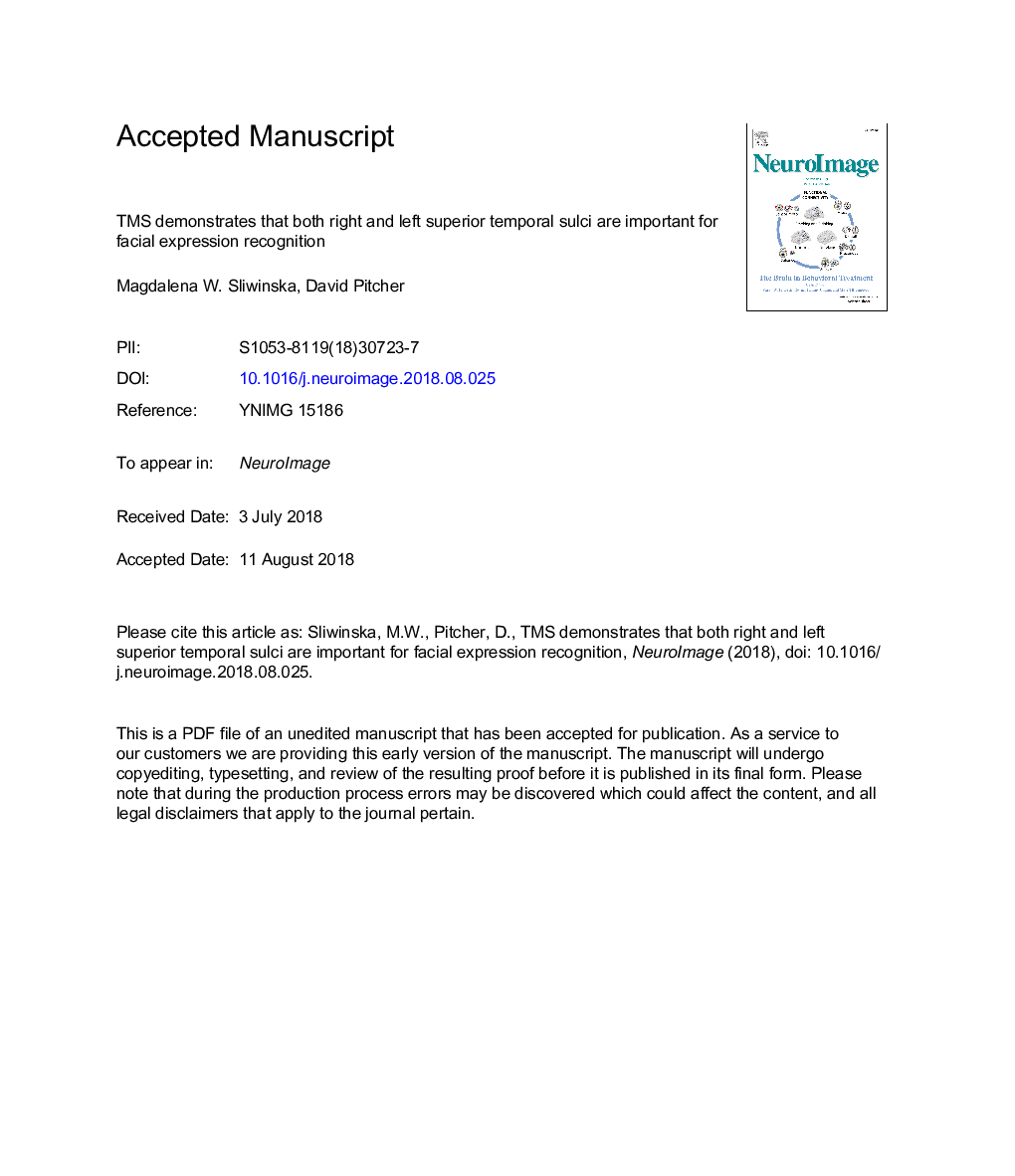| Article ID | Journal | Published Year | Pages | File Type |
|---|---|---|---|---|
| 8686607 | NeuroImage | 2018 | 20 Pages |
Abstract
Prior studies demonstrate that a face-responsive region in the posterior superior temporal sulcus (pSTS) is involved in facial expression recognition. Although this region can be identified in both hemispheres, studies more commonly report it in the right hemisphere. However, the extent to which expression recognition is lateralised in pSTS remains unclear. In the current study, we used transcranial magnetic stimulation (TMS) to systematically compare the causal contribution of the right pSTS (rpSTS) with the left pSTS (lpSTS) during facial expression recognition. TMS was delivered over the functionally localised rpSTS, lpSTS and the control vertex site while participants (Nâ¯=â¯30) performed an expression matching task and a control object matching task. TMS delivered over the rpSTS impaired expression recognition more than TMS delivered over the lpSTS. Crucially, TMS delivered over the rpSTS and lpSTS impaired task performance more than TMS delivered over the control site. TMS had no effect on the control task. This causally demonstrates that while task disruption was greater in the rpSTS, both the rpSTS and the lpSTS were engaged in facial expression recognition. Our results indicate that cognitive functions that are seemingly lateralised in neuroimaging studies, still rely on computations performed in both hemispheres for optimum task performance.
Keywords
Related Topics
Life Sciences
Neuroscience
Cognitive Neuroscience
Authors
Magdalena W. Sliwinska, David Pitcher,
